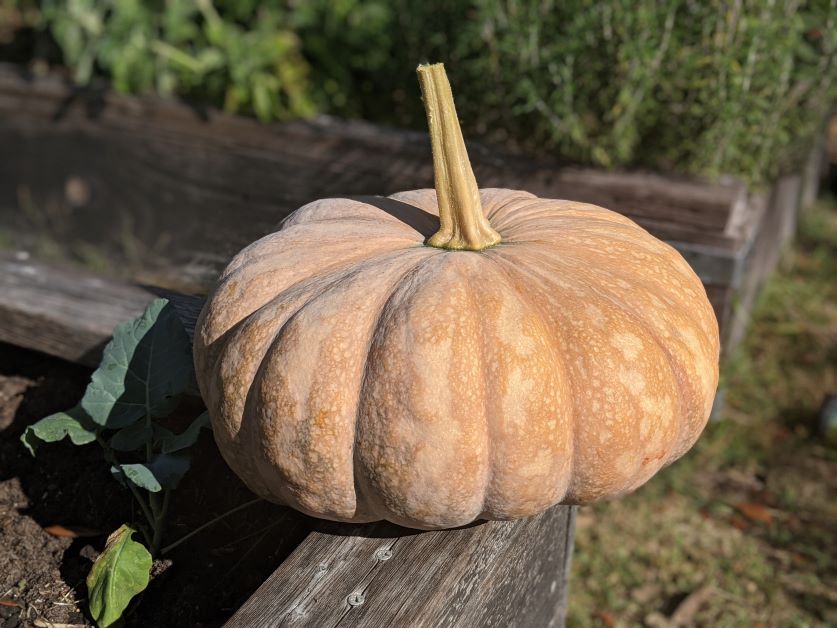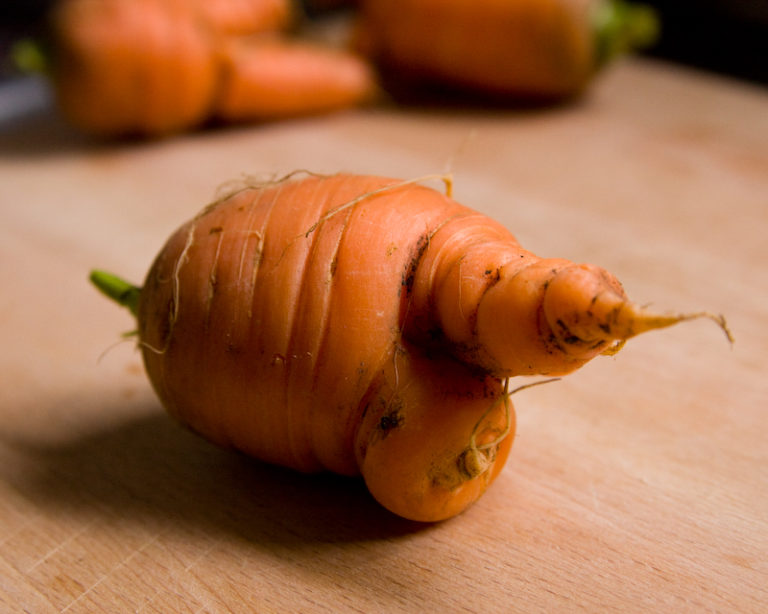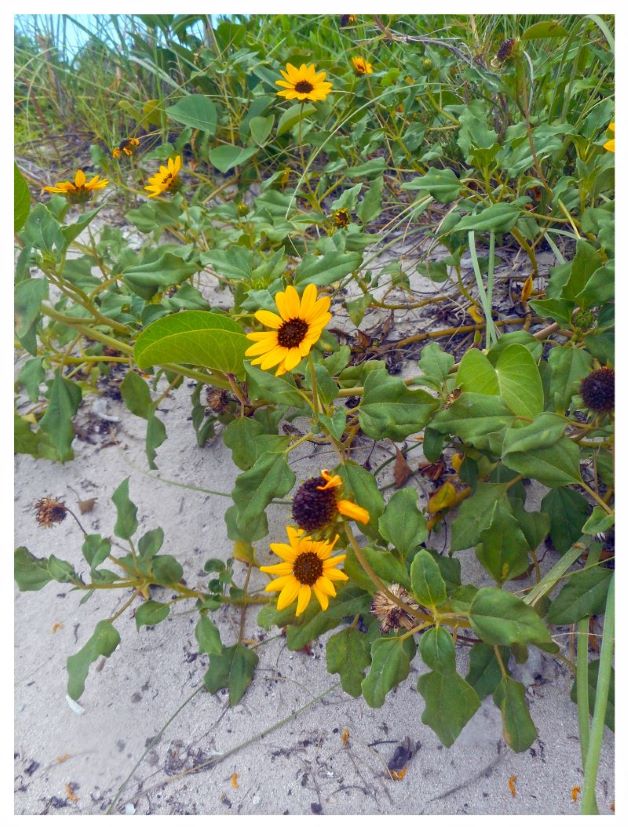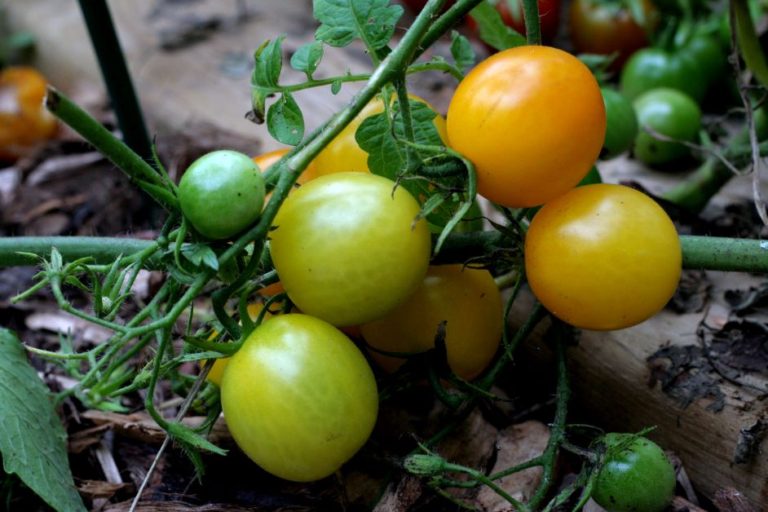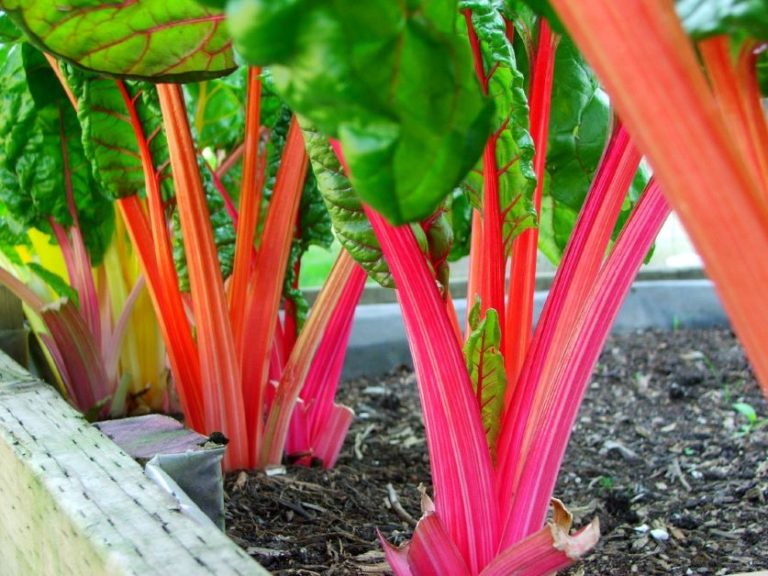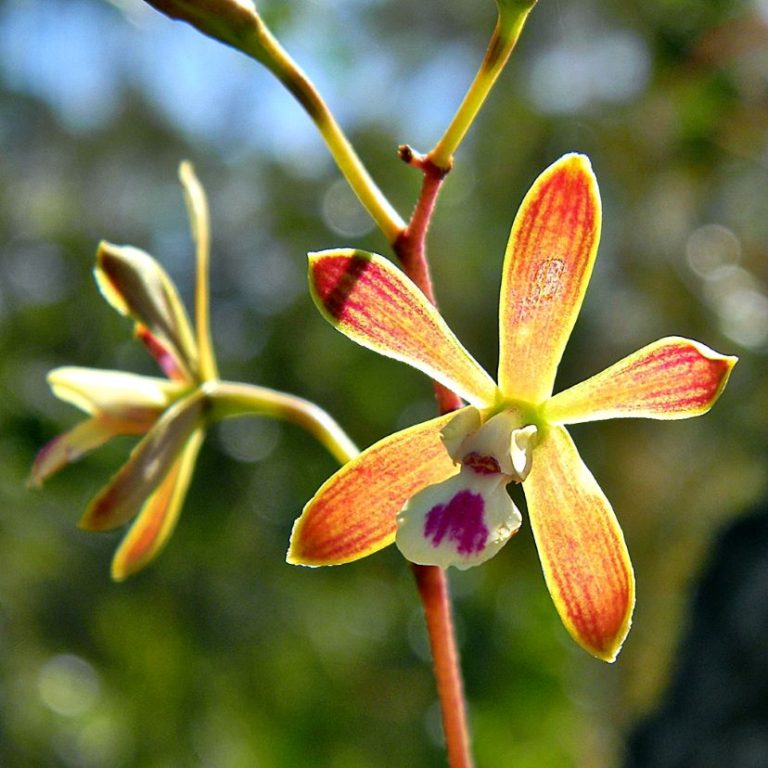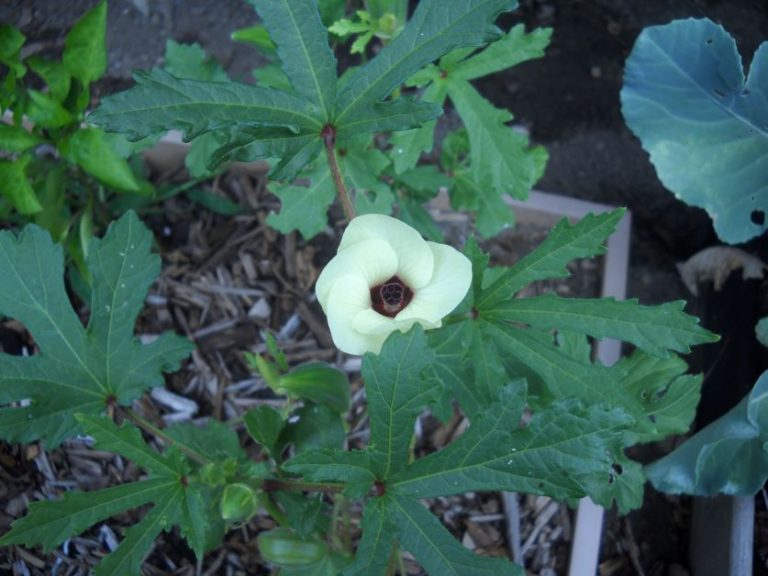Seminole Pumpkin Growing Guide
Last updated: 05/22/2022
Without question, the Seminole is the best pumpkin to grow in Florida. Because they’re a Florida native, this cultivar is built to withstand our heavy rains, extreme heat, and overwhelming humidity. In fact, Seminole pumpkins are one of the few vegetables that grow during Florida summer.
As a staple crop for many Native American tribes, Seminole pumpkins are an important part of Florida’s history. Traditionally, Native Americans would plant Seminole pumpkins at the base of trees and allow them to ramble up the trunks. The trees would act as a natural trellis and the pumpkins, clinging to the branches with their strong tendrils, would grow in mid-air. Just imagine a forest dripping in pumpkins and Spanish moss. What a sight that must have been!
When to plant Seminole pumpkin in Florida
[table id=14 /]
If you’re running a little behind schedule, you can plant Seminole pumpkins in mid-summer, but do be aware that pests and diseases can be overwhelming this time of year. Don’t be afraid to experiment a little bit – that’s half the fun of gardening!
I live in Central Florida (zone 9B), but I followed the South Florida planting schedule. I started my Seminole pumpkin in August and harvested my first pumpkin on January 1st. Although I only got one pumpkin off that vine, it was a whopper weighing in at 11.8 lbs.

How to plant Seminole pumpkin seeds
Like all cucurbits, Seminole pumpkins don’t like to be transplanted. It’s best to direct sow your seeds into the ground or in your container.
Seminole pumpkin growing conditions
Light
Seminole pumpkins are a full-sun plant and need 6-8 hours of sun a day.
Temperature
When it comes to temperature, frost is the biggest concern for Seminole pumpkins. Seminole pumpkins can grow in the heat of summer, but a hard frost will kill them.
Water
Pumpkins themselves are made of mostly water, which means they need a lot of water as they grow. A young pumpkin vine needs 1.5-2 inches of water per week. After it’s established, you can lower that to about 1 inch per week. Always water your pumpkin at the base of the vine and not the leaves.
If you’re in Florida, you’ll need to water more during the driest parts of the year (spring and fall) and may not have to water at all during the rainy season (summer). Keep an eye on your pumpkin plant and if it looks wilted and the soil is dry up to your first knuckle, then give it some water.
Soil
Like all Florida native plants, Seminole pumpkins do great in sandy soil. They aren’t too picky about what they’re grown in, as long as it’s well-draining. Pumpkins prefer a soil pH of 5.5 to 6.8.
Spacing
Seminole pumpkin is a huge plant – just one vine can grow to be 30 feet long. Make sure to give them plenty of room to sprawl. Space your Seminole pumpkin plants 4 feet apart in rows at least 6 feet apart.
Fertilizer
Over-fertilizing your Seminole pumpkin will make it grow a lot of leaves but few fruit. It only needs to be fertilized twice during its growing season – once when you plant it and once more about 6 weeks later.
I have the best results by amending my soil with oak leaf compost a week before planting and using that as my first fertilization. For the 2nd round of feeding, I use organic all-purpose vegetable fertilizer.
How to grow pumpkin on a trellis
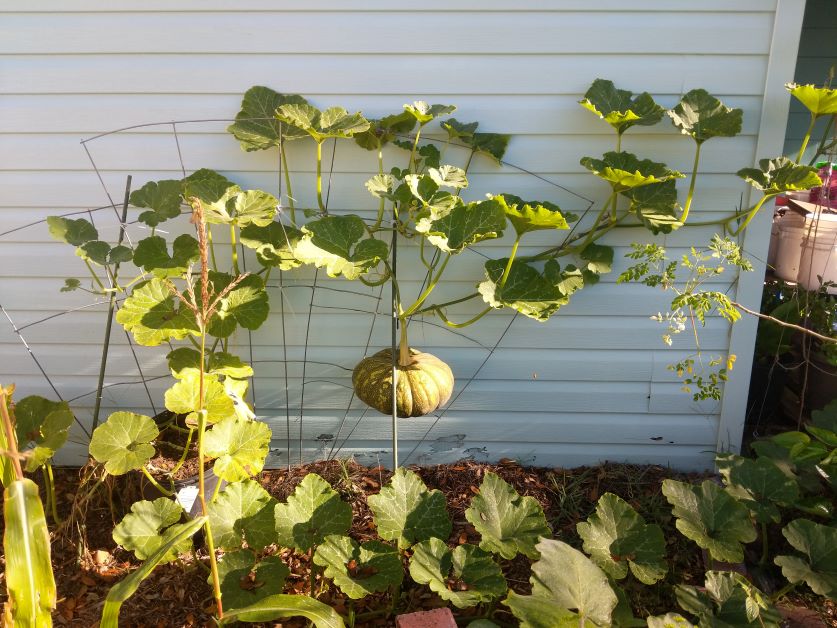
My favorite way to grow Seminole pumpkins is on a trellis. Trellising your pumpkin plant helps to improve airflow and keeps your pumpkin off of the ground and away from pests.
Seminole pumpkins are naturally adapted for vertical growing, and their vines are very strong. Unlike other plants like kabocha and sugar baby watermelons, you don’t need to sling your Seminole pumpkins as they grow. All you need to do is provide something for the vine to grow up (or over) on and it will do the rest of the heavy lifting.
Check out my tutorial on an easy DIY garden fence if you’d like to make a trellis for your Seminole pumpkin. Just be sure to stake it deep into the ground so that the weight of the pumpkins doesn’t make it topple over.
You can also use a tomato cage for a Seminole pumpkin trellis. Using tin snips, cut the tomato cage up the middle and flatten it out so that it’s no longer curved. Stick the cage deep into the ground. Then, use a zip tie to attach a stake on each side of the cage. Use the stakes to prop the cage up for extra support.
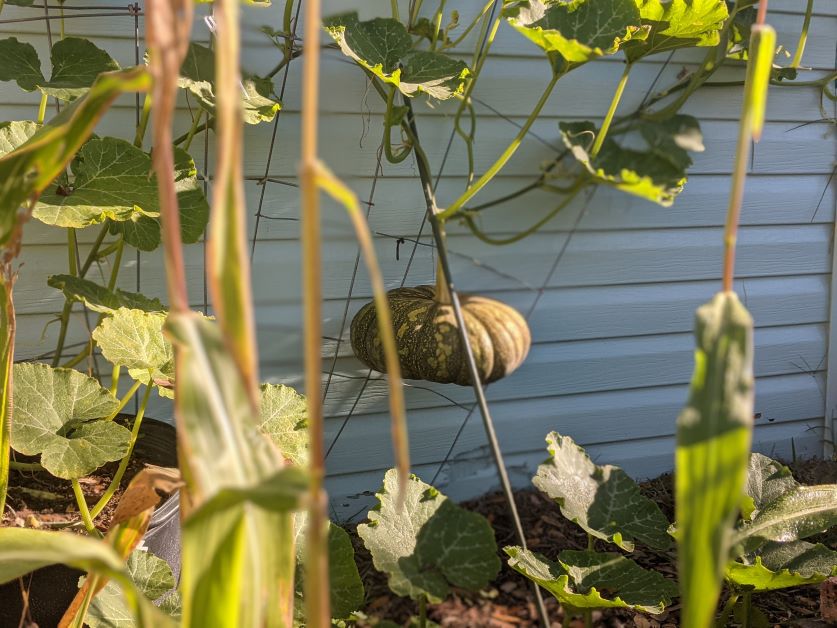
Another idea is to grow your Seminole pumpkins the same way the Native Americans did and let your vine grow up a tree. If you do, you’ll need to train your vine to stop your pumpkins from growing higher than you can reach.
If you let your Seminole pumpkin grow along the ground, it’ll root every few feet. These extra roots let the vine draw more nutrients from the soil. and helps to keep your vine hearty – if one part of your vine gets damaged, it’ll continue to grow from the secondary roots onwards.
To get the best of both worlds, I like to let my Seminole pumpkin vine grow half on a trellis and half sprawling along the ground. This really is a plant that likes to do its own thing.
Can you grow Seminole pumpkin in a container?
Yes! As long as your pot is big enough, Seminole pumpkins grow great in containers. Be sure that your container is at least 5 gallons large and has good drainage.
When growing your Seminole pumpkin in a container, don’t expect it to stay…contained. The same spacing rules apply – give your Seminole pumpkin vine plenty of room to sprawl and crawl.
Seminole pumpkin troubleshooting
Some resources will tell you that Seminole pumpkins are pest and disease-free. While it’s true that Seminole pumpkins are easy to grow in Florida, you probably will encounter a few issues along the way. Pests and fungal diseases are a hallmark of gardening in the subtropics, after all.
Seminole pumpkin disease
Powdery Mildew
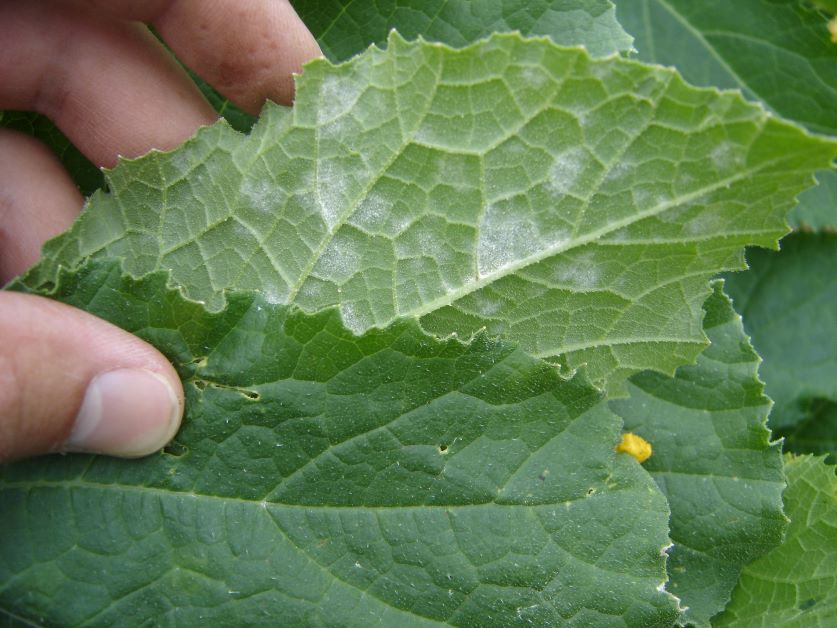
If the leaves on your Seminole pumpkin plant look like they have splotches of white powder dusted on them, then you’ve got powdery mildew. Don’t panic, though, if you see white lines that almost look like designs on your pumpkin leaves – this is called variegation and is completely normal.
Powdery mildew is one of the most common diseases for Seminole pumpkins. It’s a fungal disease that’s caused by incorrect watering and high humidity. Soggy leaves are a surefire way to contract powdery mildew, so don’t water your plant from overhead. Instead, water your vine at the base. Using a drip irrigation system or a water wand can help.
If you do see signs of powdery mildew, immediately treat your plant with organic copper fungicide. It may or may not work – copper fungicide is best used as prevention rather than as a solution, but it’s worth a try. Follow the application instructions on the bottle.
Gummy Stem Blight (Black Rot)

Gummy stem blight, or black rot, is another fungal disease common to cucurbits, including Seminole pumpkin. Signs of gummy stem blight include:
- yellowing leaves
- dry brown spots on leaves
- mushy stems and vines
- split vines that ooze
- black spots on vines
- rotting fruit
Overwatering and watering from overhead can cause gummy stem blight. You should also water in the morning instead of at night so that your plant can have a chance to dry in the sun.
Gummy stem blight is contagious. If one of your plants contracts this disease, you may want to consider pulling it up and destroying it to avoid losing your whole crop. Rotating your crops and clearing old mulch and debris from your garden beds can also help you avoid gummy blight.
Finally, gummy blight disease can spread through contaminated seeds. Always buy your seeds from reputable sources, and look for disease-resistant brands.
As with powdery mildew, you can try organic copper fungicide to treat gummy blight but it might not be effective.
Seminole pumpkin pests
Vine Borer
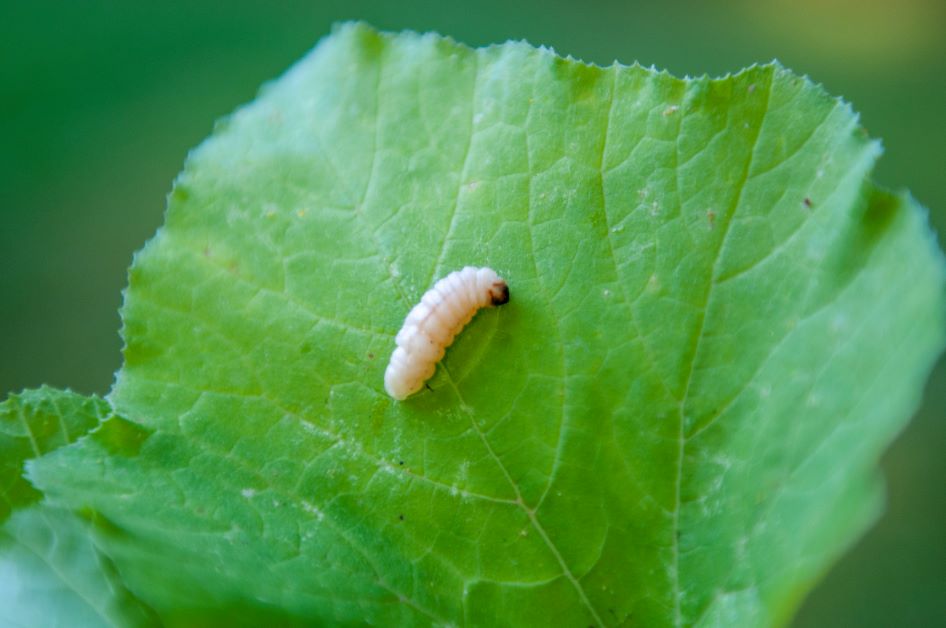
Vine borers are one of the most devastating pests in the garden. Once a vine borer attacks a plant, there’s usually no hope of saving it.
The vine borer lays dormant in the soil until they hatch from its cocoon. After they emerge from their cocoon, they lay eggs along the stem of your plant. Once the eggs hatch, the larvae bore a hole into the stem of your plant and crawl inside.
If the larvae make it inside the stem of your plant, your options are limited. You can try to cut out the part of the vine with the vine borer inside and replant the vine cut end down…but I’ve never had this work.
Your best defense against vine borers is to make a physical barrier. Wrap the bottom of your vines (where the vine meets the soil) in aluminum foil to make it harder for vine borers to make their way in.
Caterpillars
Caterpillars love to munch holes through Seminole pumpkin leaves. They’re especially attracted to new growth and can kill a young plant over the course of a few days.
The two best organic ways to control caterpillars are physical removal and Monterey BT spray.
Caterpillars make hiding spots for themselves under leaves. They use webbing curl and edge of leaf over themselves, sort of like hiding under a blanket. If you pull the leaf apart, inside you’ll find the caterpillar. Check your Seminole pumpkin on a regular basis for hiding caterpillars. While wearing gardening gloves, remove them by hand and squish them.
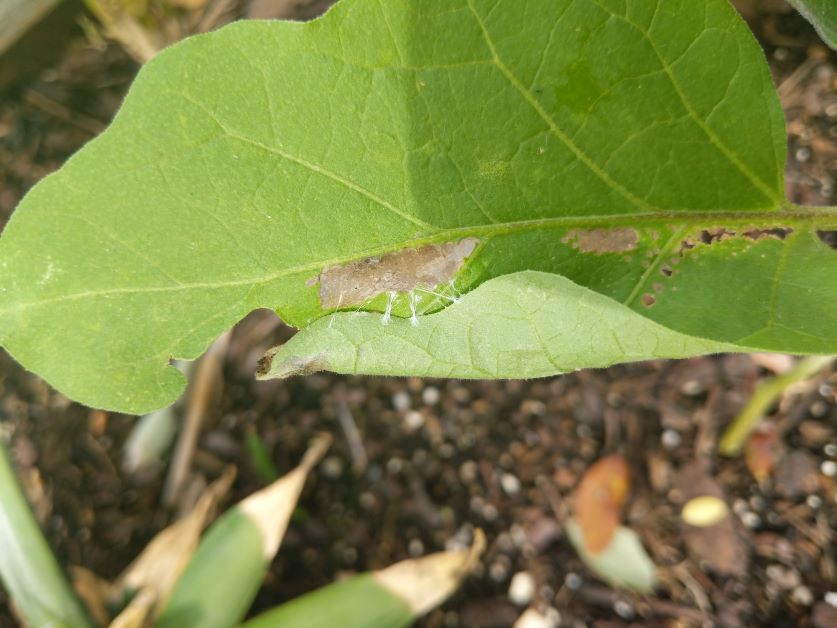

If you’re fighting a full-blown caterpillar infestation, then you might want to switch to organic chemical control.
Monterey BT is an organic pest spray made of bacteria called Bacillus thuringiensis. It’s safe for mammals and bees but it’s toxic to caterpillars, including butterfly larvae. That’s why you should try to remove caterpillars by hand before resorting to chemicals.
If you do use BT, keep it away from milkweed to avoid harming the precious Monarch butterfly.
Incomplete pollination
If you have a small pumpkin that stops growing when it’s between the size of a golf ball and a softball, it wasn’t pollinated completely. Eventually, this mini-fruit will rot and drop off the vine.
How to tell the difference between a male and female pumpkin flower
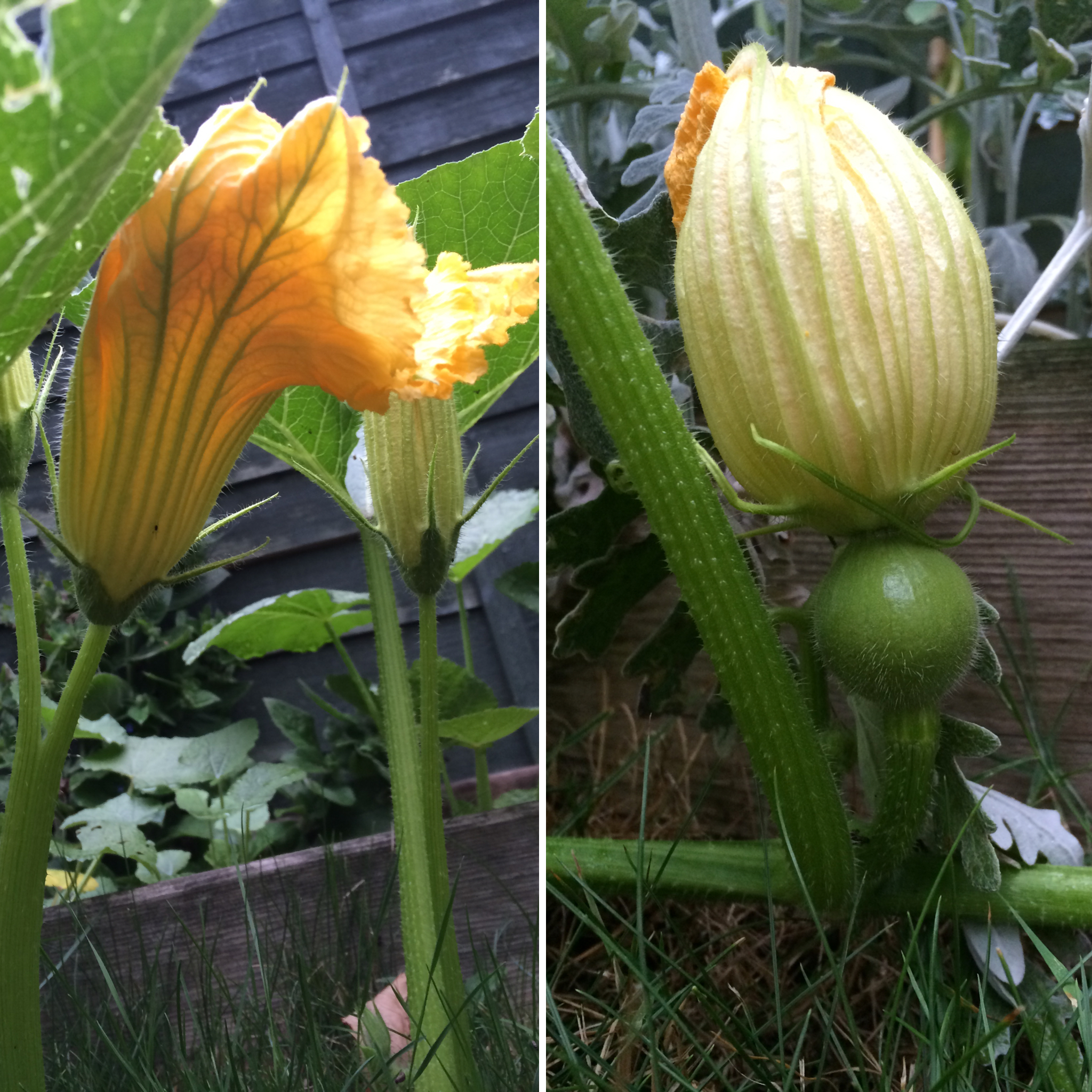
To produce viable fruit, pollen from a male pumpkin flower needs to make its way to a female flower and pollinate it. When a Seminole pumpkin vine is growing, it produces many male flowers first, and then the female flowers will form.
It’s easy to tell the difference between a male and a female pumpkin flower. A female pumpkin flower has a tiny fruit at the base, where the flower meets the vine. A male flower doesn’t.
How to hand pollinate a pumpkin
Most of the time, natural pollinators like bees and ants do a good job of pollinating Seminole pumpkins. If you find that your pumpkins are incompletely pollinated on a regular basis, then you should hand-pollinate your pumpkin.
Hand-pollinating is easy. Use a small paintbrush or a clean, unused toothbrush and gather a good amount of pollen from a male flower. Take that pollen and rub it on the inside of a female flower. Voila, your Seminole pumpkin is now pollinated.
When to harvest Seminole pumpkins
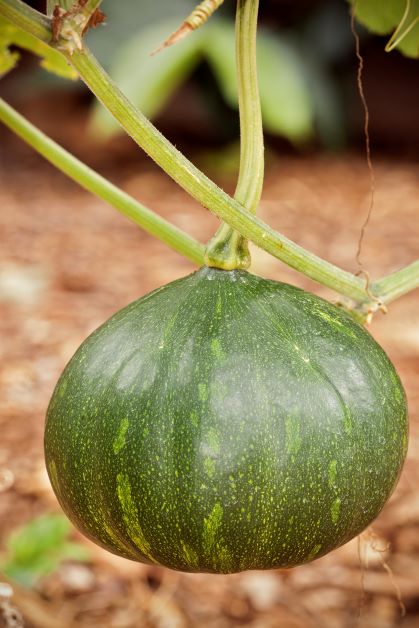
It takes about 120 days to go for a Seminole pumpkin to go from seed to harvest.
If your Seminole pumpkin doesn’t look exactly like the pictures you see online, don’t worry. Usually, Seminole pumpkins are a dusty orange color and a little more flat than completely round, but they come in a wide range of shapes and colors.
If you’re growing more than 1 type of squash and your Seminole pumpkin turns out looking a little funky, it’s possible that it was cross-pollinated. A cross-pollinated Seminole pumpkin is still edible, but the seeds won’t be viable for replanting.
There are 2 things to look for when determining whether your Seminole pumpkin is ready for harvest: color and the woodiness of the stem.
As a Seminole pumpkin ripens, it turns from green to orange. When the pumpkin is a uniform orange color, then it is fully ripe. Some people do harvest green Seminole pumpkins, which is totally fine. They are edible whether they’re green or orange. If you do harvest Seminole pumpkins when they’re green you can eat them whole, skin and all.
The stem connecting the Seminole pumpkin to the vine should be a bit spiny, woody, and hard. Using a sharp knife or pruning shears, carefully cut your pumpkin from the vine, leaving 3-6 inches of stem on the pumpkin.
After harvesting your first pumpkin, leave your vine to grow. If your vine is healthy, you should be able to harvest several pumpkins from it throughout the season.
Is Seminole pumpkin good eating?
Yes! For Floridians, Seminole pumpkins are a great alternative to butternut and acorn. These pumpkins are sweet with soft flesh that’s not very stringy. They usually get to be 6 to 12lbs.

